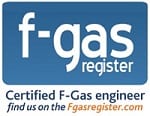A range of influential cooling bodies from across Europe have issued new guidance focusing on the legal and safety requirements of dealing with low and high flammability gasses
The increasing importance of flammable refrigerants to a cooling industry under pressure to meet the requirements of EU F-Gas regulation, as well as fears about ensuring the appropriate and legal use of such products, are among the key themes of a new joint industry guide.
‘Grow your business: get ready for flammable refrigerant’ is a guide that has been published by EPEE, ASERCOM, EFECT and European contractors’ association AREA to set out the legislative and safety requirements facing industry whether using low or higher flammability products.
A joint statement from the associations said, “Low GWP refrigerants are increasingly used as a result of the HFC phase-down provided by the F-Gas Regulation. Many of these low GWP refrigerants are flammable.”
“This characteristic has various direct impacts on installers’ daily work, whether in terms of qualifications, standards, manufacturers’ instructions or equipment and working conditions.”
Ensuring that any installers working with HFC containing stationary refrigeration, heat pumps or air conditioning technology are certified to do so is among the broad advice given in the guidance.
The associations said that awareness of proper qualifications, which are not always mandatory in countries, is essential to ensure safety. Meeting standards set out in local building codes and regulation, as well as manufacturer instructions and maintenance recommendations are also stongly advised.
The guidance document also points to a dilemma with refrigerant where the lower the GWP of a product, the more likely it will be flammable and require additional planning and preparation for its use.
Under the ISO 817 standards, flammability and toxicity are both currently measured on a scale that varies from lower toxicity to higher toxicity, defined respectively by either the letters ‘A’ or ‘B’, or from non-flammable – defined as 1 – to a higher flammability represented by 3.
A range of manufacturers are presently pushing lower flammability, low toxicity products on to the market such as R32, which is defined as an A2L product.
The guide stresses that any type of flammable refrigerant should only be used in a system that is specifically designed to handle the gas, regardless of the exact definition of flammability.
The publication also noted that an ongoing phase-down of higher GWP products under EU regulation could increase price pressures for more commonly used products. This in turn has led to growing concerns already felt in industry about counterfeit or illegal products.
The guide said, “As the EU and industry faces up to reports of an illegal trend in refrigerant that could undermine efforts to curb greenhouse gas outputs under F-Gas regulation, enforcement is just one of the challenges arising from the ongoing development of the flagship environmental legislation.
“Uncertainty remains as we enter 2019 as to just how well-prepared industry is to realise a switch to Lower GWP product. With an upcoming ban just over a year away and an industry that appears to have managed to avoid crippling scarcity within it refrigerant needs during 2018, it remains hard to predict how prices for higher GWP products will be in 2019.”
Source: RAC plus


